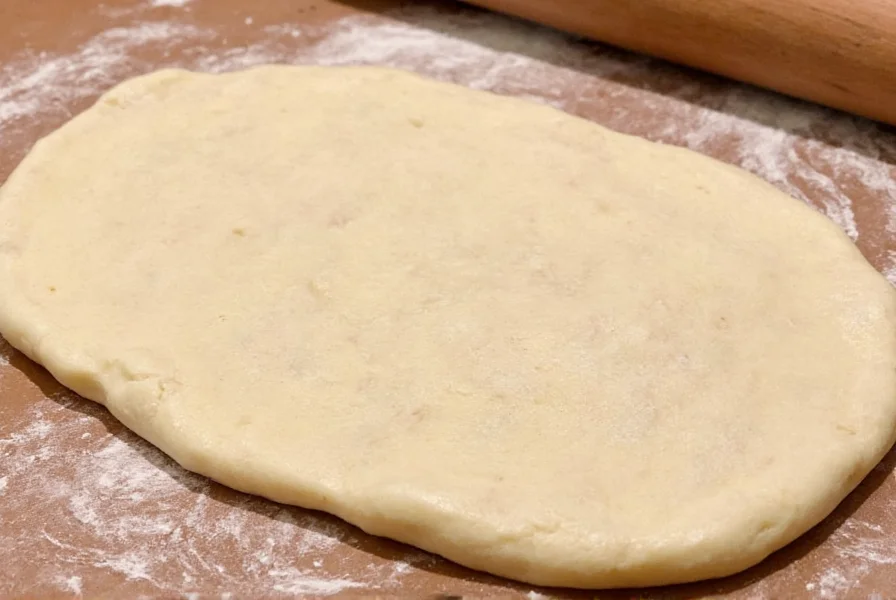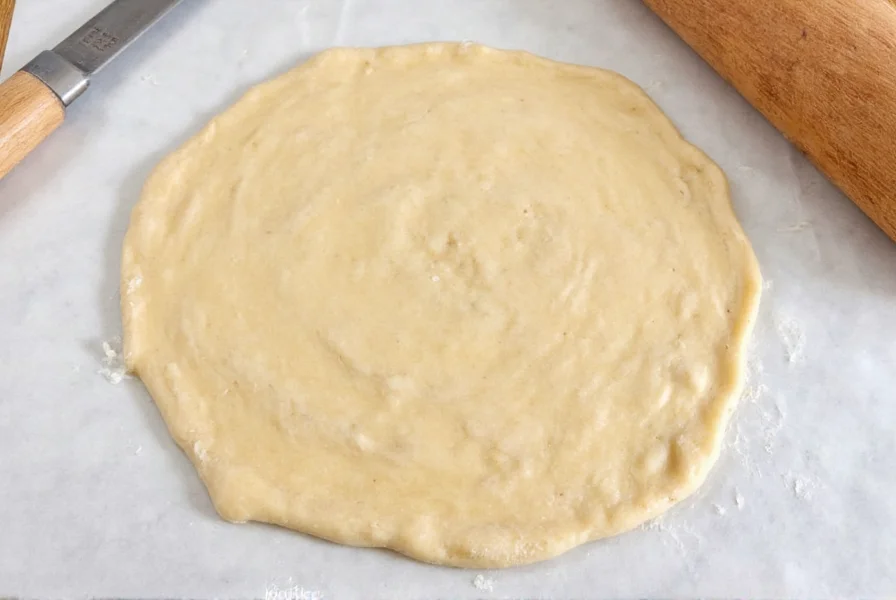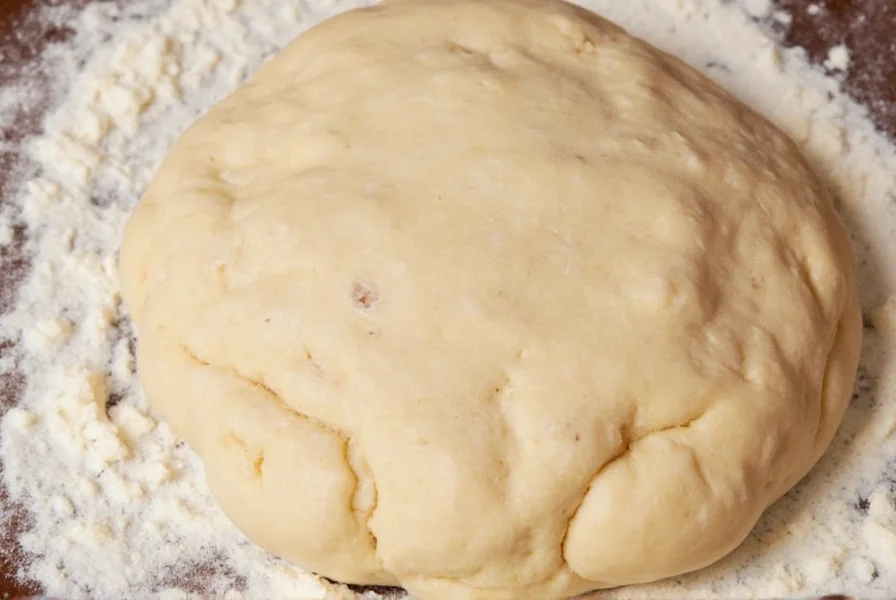Creating flawless cinnamon roll dough is both a science and an art. Whether you're a beginner baker or looking to refine your technique, understanding the components and processes that make exceptional dough will transform your results from ordinary to extraordinary. This guide provides professional insights into crafting the perfect cinnamon roll dough that rises beautifully, maintains structure, and delivers that signature melt-in-your-mouth texture.
Essential Components of Quality Cinnamon Roll Dough
The foundation of exceptional cinnamon rolls begins with understanding each ingredient's role in the dough matrix. Unlike basic bread dough, cinnamon roll dough is enriched with additional fats and sugars that affect both texture and flavor development.
| Ingredient | Function in Dough | Optimal Ratio |
|---|---|---|
| All-purpose flour | Provides gluten structure | 4-5 cups (16-20 oz) |
| Unsalted butter | Creates tenderness and flavor | ⅓-½ cup (2.7-4 oz) |
| Granulated sugar | Feeds yeast, adds sweetness | ¼-⅓ cup (1.8-2.4 oz) |
| Warm milk | Activates yeast, adds moisture | ⅔-¾ cup (5.3-6 oz) |
| Active dry yeast | Rising agent | 2¼ tsp (0.3 oz) |
Step-by-Step Cinnamon Roll Dough Preparation
Follow this professional method for consistent results every time you make cinnamon roll dough from scratch. The key to perfect dough lies in temperature control and proper mixing technique.
Yeast Activation Process
Begin by properly activating your yeast, which is crucial for optimal rise. Combine ¼ cup warm milk (105-115°F/40-46°C), 1 tablespoon sugar, and the yeast in a small bowl. Let sit for 5-10 minutes until foamy. If your mixture doesn't bubble, your yeast may be expired or the liquid temperature was incorrect—start over with fresh yeast.
Dough Mixing Technique
Professional bakers recommend the following mixing sequence for ideal cinnamon roll dough texture:
- Mix warm milk, melted butter, sugar, and eggs in stand mixer bowl
- Add activated yeast mixture
- Gradually incorporate flour, ½ cup at a time
- Knead with dough hook for 8-10 minutes until smooth and elastic
- Test windowpane: Stretch a small piece of dough—if it forms a translucent membrane without tearing, it's ready

Troubleshooting Common Cinnamon Roll Dough Problems
Even experienced bakers encounter issues with cinnamon roll dough. Understanding these common problems and their solutions will help you achieve consistent results.
Dough Too Sticky
If your cinnamon roll dough won't hold shape and sticks to surfaces, it likely contains too much liquid relative to flour. Resist adding excessive flour during kneading, as this creates dense rolls. Instead, let the dough rest for 10 minutes—the flour will continue absorbing moisture. If still too sticky, add 1 tablespoon flour at a time until workable.
Dough Not Rising Properly
Several factors affect cinnamon roll dough rising:
- Temperature: Ideal rising environment is 75-85°F (24-30°C). Too cold slows yeast activity; too hot kills yeast
- Yeast viability: Test yeast in warm liquid with sugar before incorporating into dough
- Salt contact: Never mix salt directly with yeast—separate them in the mixing process
- Fat content: High butter content can slow yeast activity—add butter after initial mixing
Advanced Techniques for Perfect Cinnamon Roll Dough
Professional bakers use these techniques to elevate their cinnamon roll dough beyond basic recipes.
Tangzhong Method for Extended Freshness
The tangzhong technique, popular in Asian baking, creates a water roux that dramatically improves moisture retention. For cinnamon roll dough, combine 3 tablespoons flour with ½ cup milk, cook until thickened to 140°F (60°C), then cool before incorporating into your dough. This method yields rolls that stay soft for 3-4 days instead of becoming stale after 24 hours.
Dough Temperature Control
Professional bakeries monitor dough temperature meticulously. The ideal finished dough temperature after mixing is 75-80°F (24-27°C). Use this formula to calculate your liquid temperature:
Desired dough temp × 3 - (room temp + flour temp + friction factor)
The friction factor accounts for heat generated during mixing (typically 20-25°F/11-14°C for home mixers).
Overnight Refrigerated Fermentation
For enhanced flavor complexity, try a cold fermentation method. After the first rise, punch down the dough, shape into a ball, and refrigerate for 12-24 hours. The slow fermentation develops richer flavor while maintaining proper texture. Remove from refrigerator 1-2 hours before rolling to allow the dough to warm slightly.

Cinnamon Roll Dough Storage Guidelines
Proper storage techniques give you flexibility in your baking schedule while maintaining dough quality.
Short-Term Refrigeration
Unshaped dough can be refrigerated for up to 24 hours after the first rise. Place in a lightly oiled bowl, cover tightly with plastic wrap, and store in the coldest part of your refrigerator. When ready to use, let the dough come to room temperature for 1-2 hours before rolling.
Freezing Cinnamon Roll Dough
You can successfully freeze both shaped and unshaped cinnamon roll dough:
- Unshaped dough: Freeze in ball form for up to 3 months. Thaw overnight in refrigerator before proceeding with recipe
- Shaped rolls: Place on parchment-lined baking sheet, freeze until solid, then transfer to freezer bag. Bake from frozen, adding 15-20 minutes to baking time
Expert Tips for Consistently Perfect Cinnamon Roll Dough
Professional bakers rely on these insider techniques to ensure flawless results every time they make cinnamon roll dough.
- Measure flour correctly: Spoon flour into measuring cup and level—don't scoop directly from bag, which compacts flour and leads to dry dough
- Use dairy alternatives wisely: Buttermilk adds tang but requires reducing other liquids; non-dairy milks work but may alter browning
- Roll dough evenly: Use a rolling pin with guide rings or place dough between parchment sheets for uniform thickness
- Prevent filling leakage: Leave a ½-inch border along one long edge when spreading filling to seal properly when rolling
- Sharp knife matters: Use dental floss or a sharp serrated knife to cut rolls cleanly without compressing the dough
Frequently Asked Questions About Cinnamon Roll Dough
Can I use instant yeast instead of active dry yeast for cinnamon roll dough?
Yes, you can substitute instant yeast for active dry yeast in a 1:1 ratio. The main difference is that instant yeast can be mixed directly with dry ingredients without pre-dissolving. When using instant yeast, you may notice slightly faster rising times—reduce first rise by 15-20 minutes. For consistent results with cinnamon roll dough, maintain proper liquid temperatures (120-130°F/49-54°C) when using instant yeast.
Why does my cinnamon roll dough shrink back when I try to roll it out?
Dough shrinkage occurs when gluten is over-tightened and needs to relax. This happens most often when the dough hasn't had sufficient resting time after kneading or when the room temperature is too cold. To fix this issue with cinnamon roll dough, let the dough rest for 10-15 minutes after the initial kneading before attempting to roll. If it still resists, cover with a damp towel and wait another 5-10 minutes. Professional bakers often use a technique called "bench rest" where they let shaped dough rest briefly before final proofing.
How can I tell if my cinnamon roll dough has risen enough?
Properly risen cinnamon roll dough will double in size and feel airy when gently pressed. The finger test is most reliable: lightly press two fingers about ½ inch into the dough. If the indentations remain without springing back completely, the dough has risen sufficiently. If the dough springs back immediately, it needs more time. If the indentation remains with no rebound, the dough is over-proofed. Ideal rising time varies by temperature but typically takes 1-2 hours at room temperature (70-75°F/21-24°C).
What's the best way to prevent cinnamon filling from leaking out during baking?
To prevent filling leakage in cinnamon roll dough, follow these professional techniques: First, leave a ½-inch border along one long edge of the dough rectangle when spreading filling—this creates a seal when you roll. Second, use a thickener like cornstarch (1-2 tablespoons) in your cinnamon-sugar mixture to absorb excess moisture. Third, chill the shaped rolls for 15-20 minutes before baking to set the filling. Finally, avoid overfilling—¼ cup of filling for a standard recipe is sufficient. Professional bakeries often use a "cinnamon paste" made with melted butter and brown sugar for better adhesion.
Can I make cinnamon roll dough without eggs for dietary restrictions?
Yes, you can successfully make cinnamon roll dough without eggs using these substitutions: For each egg, use ¼ cup unsweetened applesauce plus ½ teaspoon baking powder, or 3 tablespoons aquafaba (chickpea brine). Egg-free dough will be slightly less rich and may not brown as deeply, but will still rise properly. Increase the fat content slightly (1-2 tablespoons extra butter) to compensate for the missing egg yolks' emulsifying properties. Note that egg-free cinnamon roll dough may have a slightly denser texture but remains delicious when prepared correctly.











 浙公网安备
33010002000092号
浙公网安备
33010002000092号 浙B2-20120091-4
浙B2-20120091-4